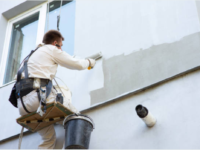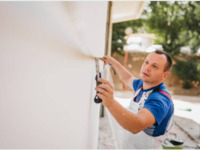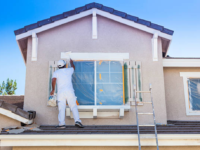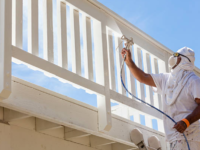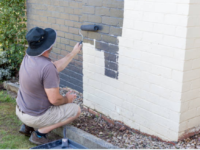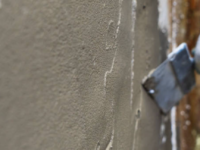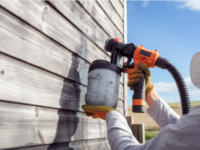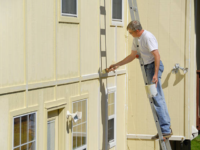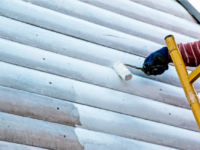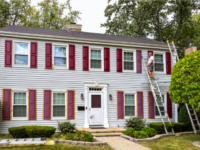Services
Download Brochures
Exterior Painting!🅿️
Exterior painting involves applying paint to the exterior surfaces of residential, commercial, or industrial buildings. Here's some key information about exterior painting:
Surface Preparation: Proper surface preparation is critical for a successful exterior painting project. This includes cleaning the surfaces to be painted, removing dirt, mildew, and other contaminants, and repairing any damage such as cracks, holes, or peeling paint.
Material Selection: Choosing the right type of paint and primer is essential for achieving durable and long-lasting results. Exterior paints are specially formulated to withstand the elements, including UV rays, moisture, and temperature fluctuations. Options include latex or acrylic paint for most surfaces, while oil-based paints may be used for specific applications.
Color Choice: Selecting the right paint color can significantly impact the curb appeal and overall appearance of a building. Factors to consider when choosing colors include architectural style, surroundings, and personal preference. Many paint manufacturers offer color matching and consultation services to help clients find the perfect color scheme.
Weather Considerations: Exterior painting should be done during favorable weather conditions, typically when temperatures are moderate, humidity is low, and there is little to no chance of rain. Painting in extreme heat, cold, or moisture can affect paint adhesion and drying time, leading to poor results.
Application Techniques: Exterior painting can be done using various techniques, including brushing, rolling, and spraying. The choice of technique depends on factors such as surface texture, accessibility, and desired finish. Professional painters have the skills and equipment to achieve smooth and uniform paint application.
Surface Protection: During painting, adjacent surfaces such as windows, doors, and trim should be protected from overspray and drips using masking tape, plastic sheeting, or drop cloths. Landscaping, outdoor furniture, and fixtures should also be covered or moved away from the work area to prevent damage.
Quality of Workmanship: The quality of workmanship is crucial for achieving professional-looking results and ensuring the longevity of the paint job. This includes proper paint application, attention to detail, and thorough coverage of all surfaces. Experienced painters know how to address challenges such as uneven surfaces, intricate details, and difficult-to-reach areas.
Drying and Curing: After painting, sufficient drying and curing time is necessary for the paint to fully adhere and achieve its desired finish. Depending on the type of paint and weather conditions, this may take several hours or days. Adequate ventilation and protection from rain or excessive moisture are essential during the drying process.
Cleanup and Inspection: Once the paint has dried, cleanup involves removing protective coverings, cleaning tools and equipment, and disposing of paint waste responsibly. A final inspection ensures that the painting project meets the client's expectations and quality standards.
Maintenance: Regular maintenance, such as cleaning painted surfaces and addressing any touch-ups or repairs as needed, helps prolong the life and beauty of exterior paintwork. Periodic inspections can identify issues such as peeling, fading, or water damage early on, allowing for timely repairs.
Overall, exterior painting is an essential maintenance task that helps protect and beautify buildings, enhance curb appeal, and increase property value. Hiring professional painters ensures a smooth and efficient process, with beautiful and
EXTERIOR PAINTING!🅿️
We are here for all of your Exterior PAINTING needs 24/7/365.














